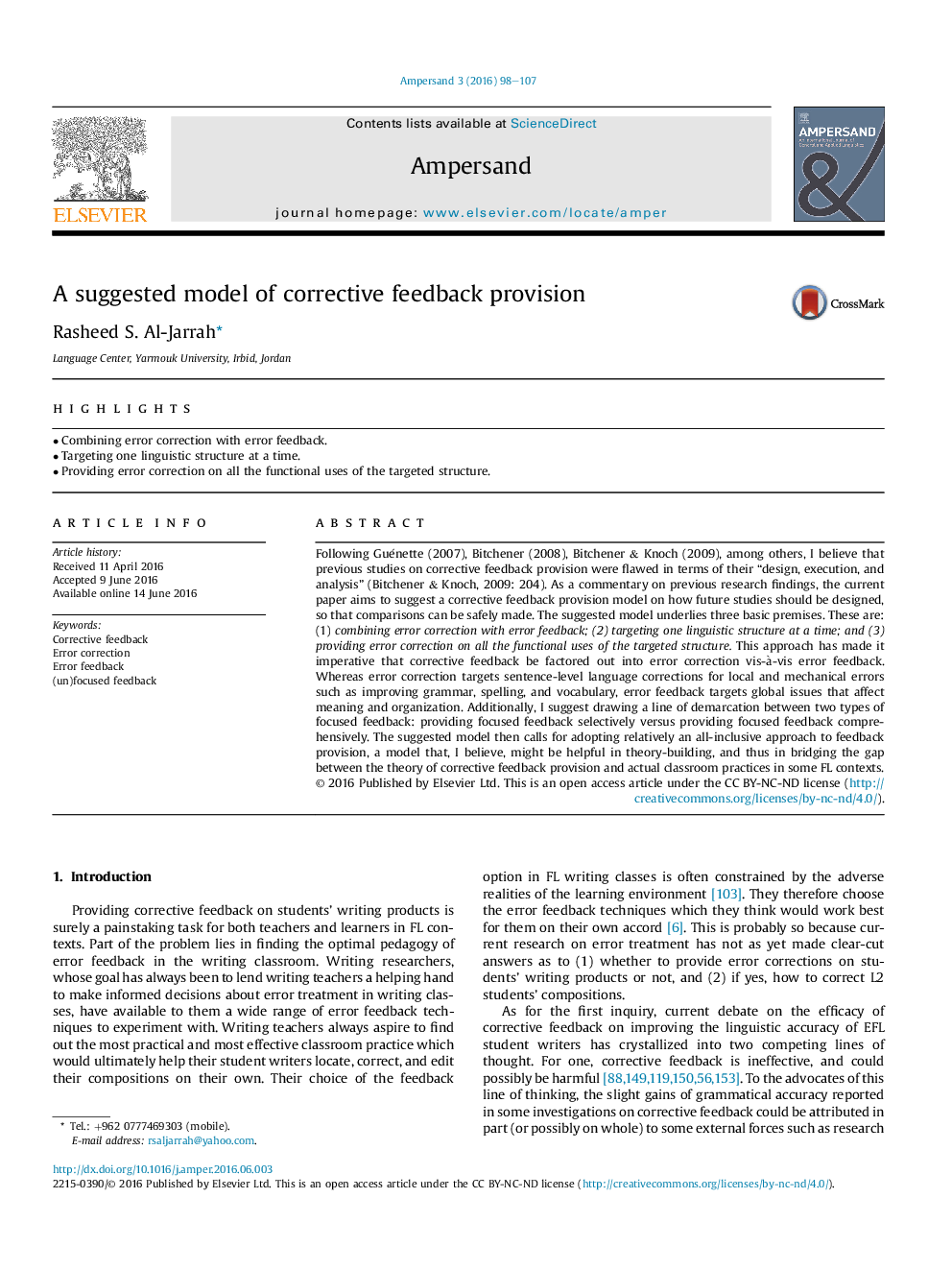| کد مقاله | کد نشریه | سال انتشار | مقاله انگلیسی | نسخه تمام متن |
|---|---|---|---|---|
| 1100462 | 1488055 | 2016 | 10 صفحه PDF | دانلود رایگان |
• Combining error correction with error feedback.
• Targeting one linguistic structure at a time.
• Providing error correction on all the functional uses of the targeted structure.
Following Guénette (2007), Bitchener (2008), Bitchener & Knoch (2009), among others, I believe that previous studies on corrective feedback provision were flawed in terms of their “design, execution, and analysis” (Bitchener & Knoch, 2009: 204). As a commentary on previous research findings, the current paper aims to suggest a corrective feedback provision model on how future studies should be designed, so that comparisons can be safely made. The suggested model underlies three basic premises. These are: (1) combining error correction with error feedback; (2) targeting one linguistic structure at a time; and (3) providing error correction on all the functional uses of the targeted structure. This approach has made it imperative that corrective feedback be factored out into error correction vis-à-vis error feedback. Whereas error correction targets sentence-level language corrections for local and mechanical errors such as improving grammar, spelling, and vocabulary, error feedback targets global issues that affect meaning and organization. Additionally, I suggest drawing a line of demarcation between two types of focused feedback: providing focused feedback selectively versus providing focused feedback comprehensively. The suggested model then calls for adopting relatively an all-inclusive approach to feedback provision, a model that, I believe, might be helpful in theory-building, and thus in bridging the gap between the theory of corrective feedback provision and actual classroom practices in some FL contexts.
Journal: Ampersand - Volume 3, 2016, Pages 98–107
